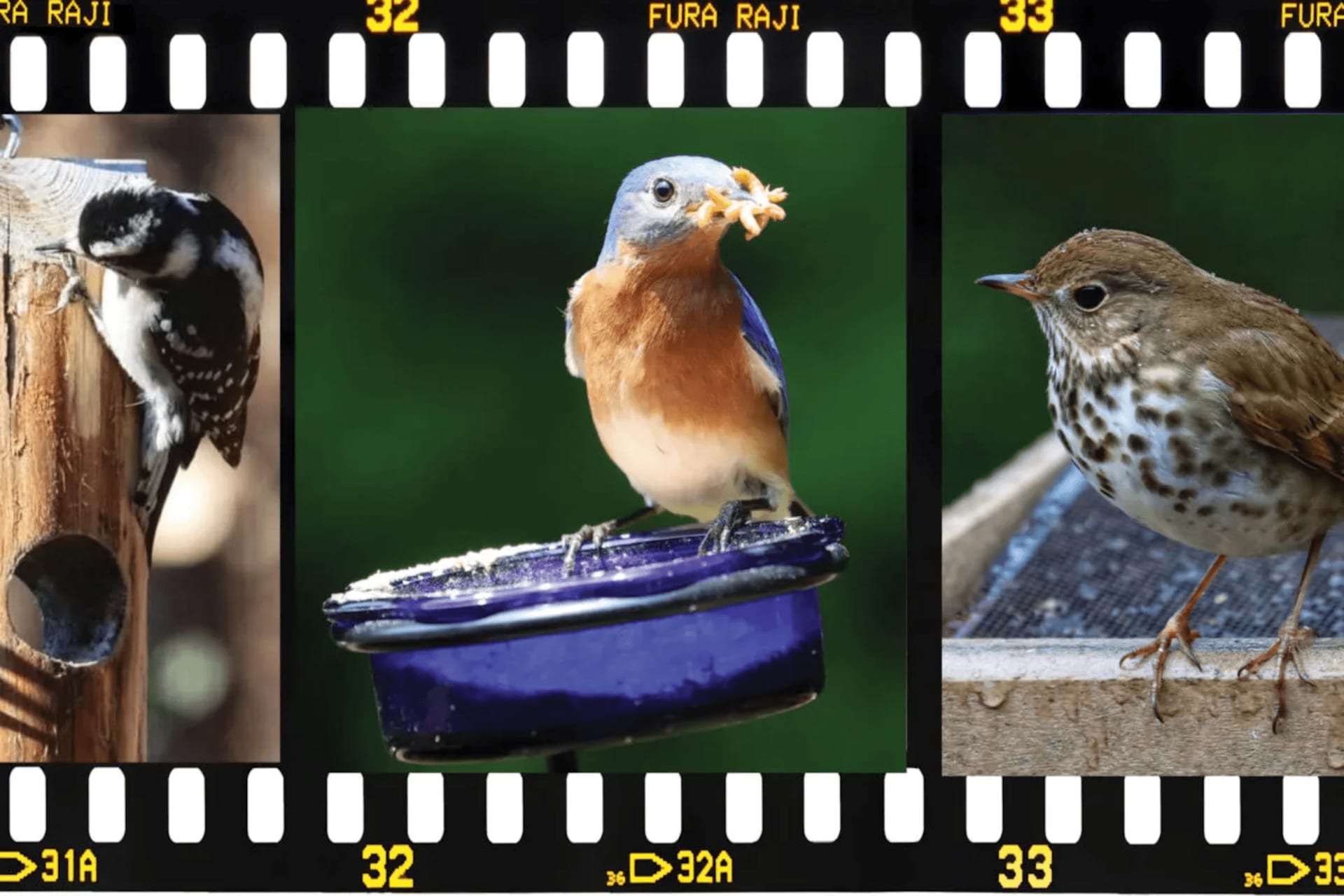My latest obsession is watching the birds at the feeders in my backyard. Over the years I’ve put out bird feeders, but I’ve been a little more serious this winter, and between that and my new location the variety of birds has been mesmerizing. In my house, “Want to watch the birds?” is not a question, it’s a statement of intent. If you want to run with the bulls, grab a glass of something (my dry January had a moist ending), bring the binoculars, and head to my bird-watching nook. I’m no expert, but as an enthusiastic novice here are some tips that will bring your fine feathered friends to your door.
If you want to keep it simple, over the winter months you’ll probably attract more songbirds with water than food. If you are using a bird bath, try to place it in a sunny area to help keep the water from freezing, and it makes it easier for them to find. Keeping water thawed can be a challenge, but I’ve found a simple solution is to pick up two heavy-duty plant saucers and leave one out at a time. Usually, I can pop out the ice and refill, but if it’s stubborn I’ll let it thaw and use the alternate.
Bird feeders come in all shapes and sizes, but I prefer having one tube style, and one feeding station with a flat landing surface. The tubes allow six or more birds to feed at one time, and the flat feeder attracts birds like cardinals, juncos, and doves who prefer not to feed while hanging from a perch. Squirrels are going to be attracted to your buffet, so try to place the feeder out of jumping distance. From experience, the best squirrel deterrent is to have the feeder on a long pole or shepherd’s hook and have a baffle in place to reduce the chance of them taking over the feeder.
Bird food comes in a variety of options, but you’ll attract the most birds with a mix that has a high percentage of sunflower seeds. The higher the sunflower mix, the more expensive the bag. Hands down the best price for quality feed is Costco, followed by Lowes. Feed prices are unusually higher this year since the California wildfires destroyed large farm areas devoted to bird feed cultivation.
A nice addition to the menu is suet, which comes wrapped in individual packages that slide in a suet feeder. Suet attracts woodpeckers, nuthatches, chickadees, and a variety of birds that crave high-energy food. Suet feeders are naturally squirrel-proof, so they can be placed anywhere.
If you start feeding your feathered friends, they become dependent on you pretty quickly as a food source, so try to keep the feeder full. They need the most help over the winter until early spring when food is scarce. The experts recommend that you stop feeding them when the weather is consistently warmer, or by April 1st. Hey Woody, how about a nice fifty-pound bag of black oil sunflower seeds? April Fools!
If you want to keep up the bird watching through the summer, put out a hummingbird feeder mid March. That’s when the early scouts started arriving in the Richmond area. You won’t see much activity then, but if you get the scout’s attention the rest will follow in April. It’s easy to make your hummingbird food, just add one part sugar to four parts water and boil until you have a simple syrup, then let it cool. Extra can be stored in the fridge, and the feeder should be changed once a week, more frequently in hot weather. It’s worth a little effort, they are amazing to watch.


